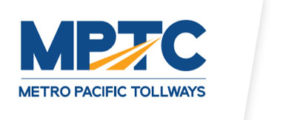New roads change landscape, spur economic development
MANILA, Philippines — A growing optimism has spurred the industry sector as various infrastructure projects have continued to pave the path toward economic growth.
The anticipation of major road infrastructure, such as the NLEX Harbor Link Segment 10, is drawing further new investments while expanding economic opportunities in the countryside.
Central Luzon, for instance, has been the country’s second fastest growing region, garnering an increase of 9.5 percent in gross regional domestic product in 2016, according to the National Economic and Development Authority (NEDA). Such economic vibrancy has been stimulated by a variety of factors, such as the ever-expanding network of efficient and modern expressways.
Consistent with the vision of the government’s massive infrastructure plan – the Build Build Build program – the NLEX Harbor Link Segment 10 is among the high impact projects that are seen to boost the productive capacity of the economy, create jobs, increase incomes, and ease traffic congestion in Metro Manila.
“We’re very excited that the vision of President Rodrigo Duterte for the Philippines is quickly becoming a reality, and part of it is the decongestion of Metro Manila traffic, which is one of the major thrusts of the Build Build Build,” said Public Works and Highways Secretary Mark Villar in his speech during the progress inspection of the NLEX Harbor Link Segment 10 in Samson Road, Caloocan City.
NLEX Corp. president and chief executive officer Rodrigo Franco affirms the tollway company’s commitment as a “critical enabler” for industries to grow, and assures NLEX Harbor Link Segment 10 motorists that “they will get the same seamless, safe, and comfortable travel experience already available in the NLEX.”
Driving commerce
The NLEX Harbor Link Segment 10, an 8.25-kilometer, 4-lane elevated expressway traversing MacArthur Highway in Karuhatan, Valenzuela City and eventually reaching Radial Road 10 in (R-10) Navotas City, will primarily cater to the transport logistics industry that operates between the port of Manila and Central and Northern Luzon provinces.
Freight forwarders, logistics services providers, truckers, and terminal operators —who are currently affected by the congestion through the major streets of Manila — may soon benefit from the direct access to NLEX from the R10 and vice-versa. Cargo trucks shall hence be spared from the truck ban and will subsequently experience quicker turn around.
Faster travel means more trips for cargo trucks, lesser trucking costs, and will even lead to on-time delivery of goods to different inland destinations.
Spurring economic activities
It can be recalled that in 2017 the Japan International Cooperation Agency (JICA), reported that traffic congestion in Metro Manila results in an estimated economic productivity loss of around P3.5 billion a day and which will increase to about P6.0 billion per day by 2030 if no interventions would take place.
With the NLEX Harbor Link Segment 10 nearing its completion, one can already see a light at the end of the tunnel. Further, as the road network is crucial in creating an enabling business environment, the new expressway will also spur economic activities in the CAMANAVA (Caloocan, Malabon, Navotas, Valenzuela) area.
Cuts travel time by 50%
“We are optimistic that through the help of our partners in government, we will be able to finish the project in October this year to further deliver seamless and safe travel to our motorists,” said NLEX Corp. senior vice president for Tollways Development and Engineering Raul Ignacio.
With this alternative access to Central and Northern Luzon, we can expect improvement in traffic along major thoroughfares in Metro Manila and daily users can head straight to the NLEX bypassing EDSA and the Balintawak Toll Plaza altogether.
Travelers from Manila to North Luzon and vice-versa may anticipate a shorter travel time as the elevated expressway of Harbor Link has direct routes between the North Luzon, CAMANAVA, and Northern Manila areas. It also permits an average speed of 80kph, which cuts travel time by almost half.
Consequently, driving from NLEX Valenzuela to R10 in Navotas may only take 11 minutes from the usual travel time of 23 minutes (via Balintawak-Monumento), while driving From NLEX to Navotas via Cloverleaf Balintawak-A. Bonifacio/C3 may soon take only 13 minutes as compared to the current travel time of 26 minutes.
Much improved road safety
Motorists and the riding public are also assured of high-quality NLEX pavement that they have been used to when regularly traveling between Manila and the northern provinces of Luzon.
The NLEX Corp. – due to better road pavement and tighter traffic management – is geared to achieve much lower road incidents.
As the government’s PPP partner, NLEX Corp. provides fast, safe, and efficient transport infrastructure in the Philippines.
Source: https://www.philstar.com/business/business-as-usual/2018/06/18/1825479/business
